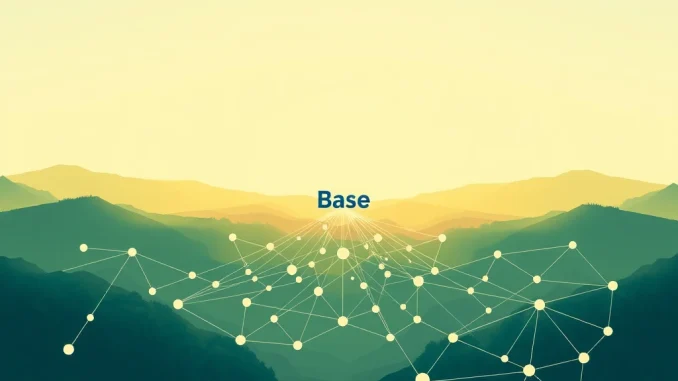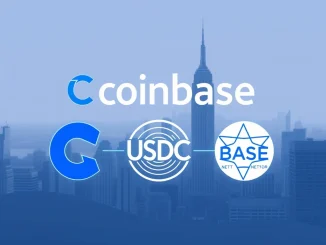
Big news for the crypto world! The Coinbase Base network, Coinbase’s prominent layer-2 solution, has hit a significant milestone on its path towards greater autonomy. It has officially transitioned to a Phase 1 rollup, marking a crucial step in its journey towards full decentralization.
What Does Becoming a Phase 1 Rollup Mean for the Base Network?
This transition isn’t just a technical label; it signifies a tangible change in the network’s governance and security model. According to CoinDesk’s report, citing Tom Vieira, Base’s head of product, moving to Phase 1 introduces a key component: the establishment of a security council.
Here’s a breakdown of what this phase typically entails for a Layer 2 rollup:
- Enhanced Security: Phase 1 rollups often incorporate mechanisms like fraud proofs or validity proofs that are actively monitored, even if withdrawals can still be challenged.
- Decentralized Governance Elements: While not fully decentralized, Phase 1 introduces independent bodies or processes that reduce reliance on the central team.
- Withdrawal Delays: A common feature allowing time for fraud proofs to be submitted and verified before assets can be withdrawn from the Layer 2 to the mainnet.
Who Joins the Security Council and What is Their Role?
A core part of this Phase 1 upgrade is the creation of the security council. Tom Vieira stated that this council will comprise independent entities chosen from within the broader Base ecosystem. Their primary function is expected to revolve around safeguarding the network, potentially overseeing upgrades, monitoring for malicious activity, or validating proofs.
The introduction of this council is a vital move away from a single point of control, distributing some level of authority and responsibility across multiple participants. This aligns directly with the goal of achieving true decentralization, making the network more resilient and censorship-resistant over time.
Why is Decentralization Important for Base?
For a network closely associated with a centralized entity like Coinbase, the push towards decentralization is paramount for several reasons:
- Trust and Credibility: Decentralization builds greater trust within the crypto community, reducing concerns about potential control or interference by a single company.
- Resilience: A decentralized network is less susceptible to single points of failure, whether technical or regulatory.
- Community Participation: It opens the door for broader community involvement in the network’s future development and governance.
Moving to Phase 1 is a clear signal of Base’s commitment to this decentralized vision, building confidence among developers and users building on the network.
What’s Next for the Coinbase Base Network?
Phase 1 is a significant step, but it’s part of a larger roadmap. The ultimate goal for many rollups is Phase 2, which typically involves full on-chain governance and removing any remaining centralized control vectors. While there’s no specific timeline provided for reaching Phase 2, this current move demonstrates tangible progress towards that end.
The establishment of the security council is a foundational element for future decentralized governance structures. It sets the stage for more community-driven decision-making processes down the line.
Summary: A Positive Step for Base’s Future
The Coinbase Base network reaching Phase 1 rollup status is a genuinely positive development. By introducing a security council and moving towards a more decentralized architecture, Base is enhancing its security, building greater trust, and aligning itself more closely with the core principles of blockchain technology. This milestone reinforces Base’s position as a major player in the Layer 2 rollup space and signals a strong commitment to its long-term growth and autonomy.



